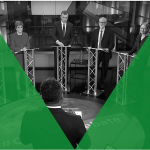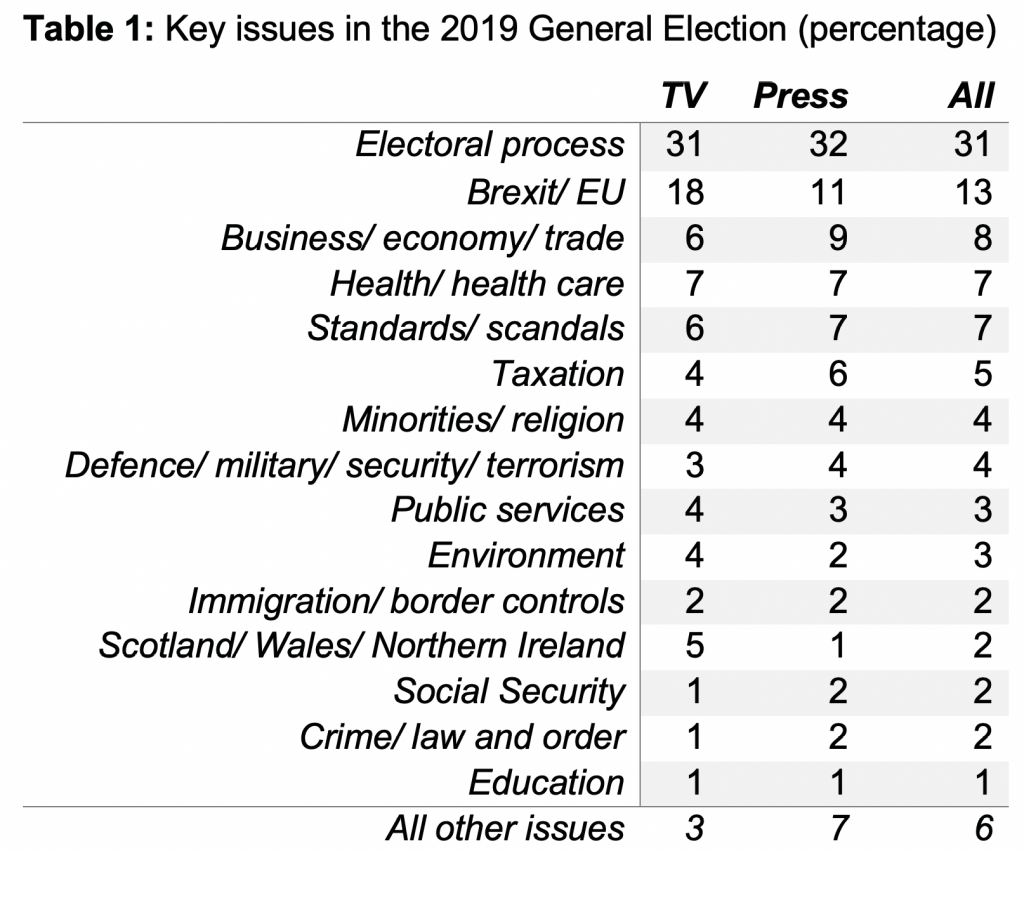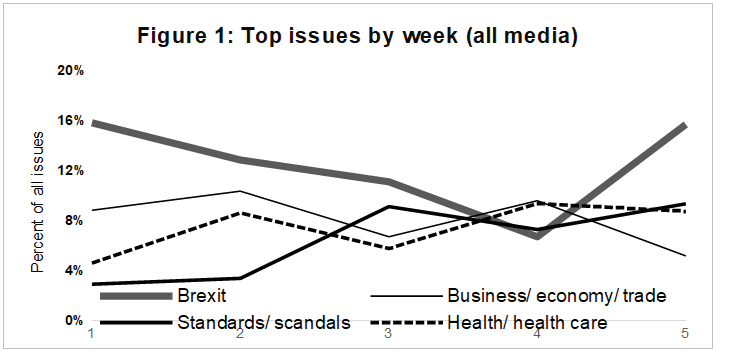
Prof David Deacon
Professor of Communication and Media Analysis, Centre for Research in Communication and Culture, Loughborough University.
Email: d.n.deacon@lboro.ac.uk
Dr Jackie Goode
Visiting Fellow in Qualitative Research, Centre for Research in Communication and Culture, Loughborough University.
Dr David Smith
Lecturer in Media and Communication, University of Leicester.
Prof Dominic Wring
Professor of Political Communication, Centre for Research in Communication and Culture, Loughborough University.
Prof Cristian Vaccari
Professor of Political Communication, Centre for Research in Communication and Culture, Loughborough University.
Prof John Downey
Professor of Comparative Media, Centre for Research in Communication and Culture, Loughborough University.

Section 7: News and Journalism
- Time to fix our TV debates
- Pluralism or partisanship? Calibrating punditry on BBC2’s Politics Live
- Hero and villain: the media’s role in identity management
- Traditional majoritarian conceptions of UK politics pose a dilemma for the media in elections
- #GE2019: A tale of two elections?
- Boxing clever: negotiating gender in campaign coverage during the 2019 General Election
- Press distortion of public opinion polling: what can, or should, be done?
- The final verdict: patterns of press partisanship
- The class war election
- An uncertain future for alternative online media?
There has been a striking amount of controversy about the mainstream media’s role during this election, almost all of which has focused on the evaluative dimensions of coverage. But what about the interpretative aspects of the campaign? To paraphrase Bernard Cohen: what were we being told to think about in 2019?
As it has for every General Election since 1992, Loughborough University conducted a ‘real time’ content analysis of all weekday election coverage in the main evening TV news bulletins and front pages and prioritised editorial spaces of all national, paid for newspapers.
In Table 1 we compare the main issues that were reported across the five weeks of the formal campaign (7 November to 11 December inclusive). It is no surprise to see electoral process coverage dominating the show. Journalists have always been interested in the drama of the electoral horse race, deconstructing the parties’ strategies, consulting citizens’ perspectives and revelling in schadenfreude at politicians’ missteps. Levels of process coverage in 2019 broadly matched those observed in 2017.
Also unsurprising is the dominance of Brexit. Some news organisations were so confident of its salience that they burned it into their electoral straplines from the outset (e.g. The Sun, The Daily Mail and, controversially, Sky TV). In 2019 Brexit gained more prominence than it did in 2017, but not by as much as one might have anticipated (13 percent compared to 11 percent). TV news gave greatest emphasis to this policy.
Aside from Brexit, the clearest difference between news sectors was coverage of Scotland, Wales and Northern Ireland’s future role in the United Kingdom. This received some degree of presence in TV news coverage but barely registered in press terms.
Elsewhere, there was striking consistency between the two news sectors as to the other main issues. The economy, the health service and taxation were predictably prominent. A major reason for the relatively high rankings for ‘Standards/ / scandals’ and ‘Minorities/ religion’ was the allegations made against the Labour party and its supposed failure to deal with anti-semitism in its ranks.
The environment received more coverage than it did in 2017, but only marginally so (up to 3 percent from 1 percent in 2017). Though coverage of the environment may be increasing, it has yet to be emphasised in party political terms in election coverage.
In the last week of the campaign, Boris Johnson was condemned for criticising EU migrants who ‘treat the UK as if it’s part of their own country’. It was a clear echo of the Vote Leave strategy in the 2016 EU Referendum, but this time around it didn’t resonate in media terms. Coverage of ‘Immigration/ border controls’ was 2 percent down from levels observed in the 2017 General Election.
But what of the temporal dynamics of the campaign? Figure 1 shows the relative prominence of the main policy themes and reveal considerable volatility week-by-week. Brexit was by far the most dominant theme at critical points of the campaign – its start and end –but in the intervening periods its prominence lessened, to the point in week 4 that it fell behind all other three major themes.
This dramatic decline needs some interpretation. Brexit was still there, but as our analysis focused on manifest content, the results showed how it had become increasingly part of the background context of the campaign rather than its focal point. That said, we know that many voters only start paying attention in the last days of an election, so the final rush of Brexit coverage could have been consequential.
Even when Brexit was reported, there was a lack of policy focused analysis as to what implementation might mean. This stood in contrast to the detailed appraisals often applied to other manifesto commitments. For example, the Institute for Fiscal Studies gained considerable campaign coverage through their analysis of parties’ spending pledges and projections. Fifty three percent of their appearances linked to taxation related coverage and 46 percent to business and economy coverage. Only 8 percent connected to Brexit1.
At the start of the campaign the Prime Minister claimed his withdrawal deal was ‘oven ready’. In the following critical weeks, to extend the metaphor, the media did precious little to assess its fat content or salt levels.
1 These percentages are separate and do not add up to 100.


